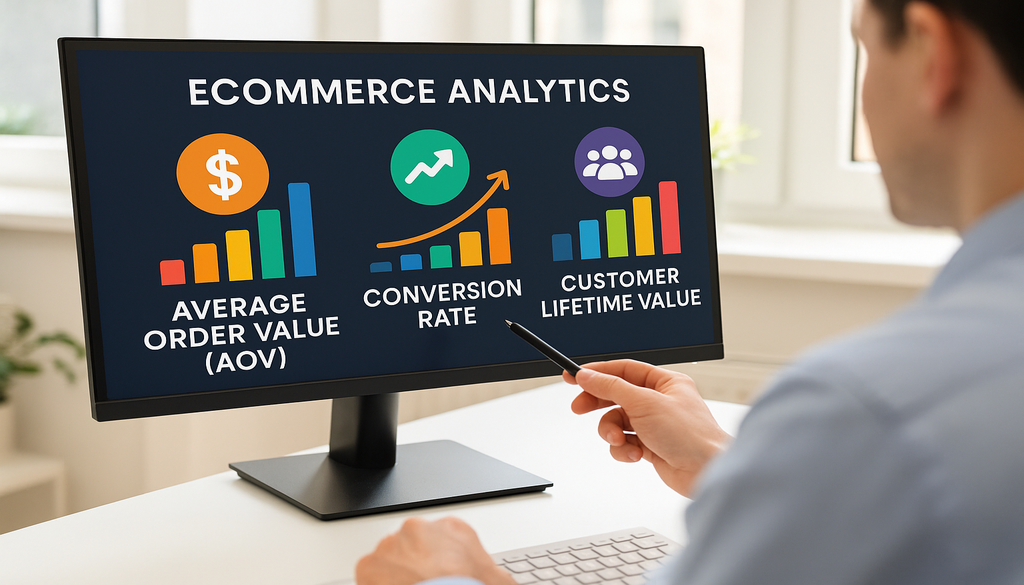Understanding Average Order Value (AOV) and Its Importance in Ecommerce
In the competitive world of ecommerce, understanding and optimizing Average Order Value (AOV) is crucial for driving revenue growth. AOV is a metric that represents the average dollar amount spent each time a customer places an order on a website or app. It is calculated by dividing the total revenue by the number of orders over a specific period. This metric is vital because it helps businesses understand customer purchasing behavior and identify opportunities to increase revenue without necessarily increasing the number of customers.
A higher AOV indicates that customers are spending more per transaction, which can significantly boost a company’s bottom line. By focusing on AOV, businesses can enhance their profitability by maximizing the value of each customer interaction. This is particularly important in ecommerce, where customer acquisition costs can be high. By increasing the AOV, businesses can improve their return on investment and achieve sustainable growth.
Step-by-Step Guide to Calculating AOV
Calculating AOV is straightforward, yet it provides profound insights into customer behavior and business performance. The formula for AOV is:
AOV = Total Revenue / Number of Orders
Let’s break it down with an example. Suppose an ecommerce store generated $50,000 in revenue over a month from 1,000 orders. The AOV would be calculated as follows:
AOV = $50,000 / 1,000 = $50
This means that, on average, each customer spent $50 per order. Understanding this figure allows businesses to set realistic revenue goals and develop strategies to increase it. For instance, if the goal is to increase AOV to $60, the business can explore methods such as upselling or offering discounts on bundled products to encourage higher spending per transaction.
Strategies to Increase Your AOV
Increasing AOV requires strategic planning and execution. One effective approach is upselling, where customers are encouraged to purchase a more expensive version of a product or add complementary items to their cart. For example, offering a premium version of a product or suggesting accessories can increase the overall order value.
Cross-selling is another powerful strategy. This involves recommending related products that complement the items already in the customer’s cart. For instance, if a customer is purchasing a laptop, suggesting a laptop bag or software can enhance the order value.
The customer experience also plays a critical role in increasing AOV. Providing personalized recommendations based on browsing history or previous purchases can make customers feel valued and more likely to spend more. Additionally, implementing loyalty programs that offer discounts or rewards for higher spending can incentivize customers to increase their order size.
Integrating AOV with Other Ecommerce Metrics for Comprehensive Insights
AOV should not be viewed in isolation. Integrating it with other ecommerce metrics such as conversion rates and customer lifetime value (CLV) provides a holistic view of business performance. For example, a high AOV with a low conversion rate might indicate that while customers are spending more, fewer are completing purchases, suggesting a need to improve the checkout process or product offerings.
Case studies have shown that businesses adopting an integrated metrics approach often see improved outcomes. For instance, a retailer who analyzed AOV alongside CLV discovered that by focusing on high-value customers and tailoring marketing efforts towards them, they could significantly boost overall revenue. This comprehensive analysis allows businesses to make informed decisions that align with their long-term goals.
Leveraging Technology to Track and Improve AOV
In today’s digital age, technology plays a pivotal role in tracking and enhancing AOV. Various tools and software are available to help businesses monitor and analyze this crucial metric. Ecommerce platforms like Shopify and Magento offer built-in analytics that provide insights into AOV trends and customer behavior. Additionally, specialized analytics tools like Google Analytics can offer deeper insights into customer interactions and spending patterns.
Real-time data analysis is particularly beneficial as it allows businesses to make informed decisions quickly. For example, if a sudden drop in AOV is detected, businesses can promptly investigate and address potential issues, such as website glitches or changes in customer preferences. By leveraging technology, businesses can not only track AOV but also implement strategies to improve it, ensuring sustained revenue growth.
Conclusion
Accurately calculating and strategically increasing Average Order Value is essential for boosting total revenue in the ecommerce sector. By understanding AOV and integrating it with other key metrics, businesses can gain comprehensive insights into customer behavior and business performance. Leveraging technology to track and analyze AOV further enhances decision-making capabilities, enabling businesses to implement effective strategies for revenue growth. As ecommerce continues to evolve, focusing on AOV will remain a critical component of a successful business strategy.
Frequently Asked Questions (FAQ)
Q1: What is the formula for calculating Average Order Value (AOV)?
A1: AOV is calculated by dividing total revenue by the number of orders over a specific period. This simple formula provides insights into the average spending per transaction, helping businesses understand customer purchasing behavior.
Q2: How can improving AOV impact overall business health?
A2: Enhancing AOV can lead to higher revenues without proportionately increasing marketing or acquisition costs, thus improving profitability. By maximizing the value of each transaction, businesses can achieve better financial outcomes and improve their return on investment.
Q3: What are some practical tips for increasing AOV in an ecommerce setting?
A3: Implementing strategies like product bundling, offering free shipping thresholds, and personalized product recommendations are effective. These tactics encourage customers to spend more per transaction, thereby increasing AOV and overall revenue.
Q4: Can AOV fluctuate seasonally and how should businesses adapt?
A4: Yes, AOV can vary with seasonal trends and promotions. Businesses should adapt by adjusting marketing strategies and inventory in response to anticipated changes. For example, during holiday seasons, offering special promotions or bundles can help maintain or increase AOV.
Q5: What tools are recommended for tracking AOV effectively?
A5: Ecommerce platforms like Shopify, Magento, and specialized analytics tools like Google Analytics offer robust capabilities for monitoring and analyzing AOV. These tools provide valuable insights into customer behavior and spending patterns, enabling businesses to make data-driven decisions.
{
“@context”: “https://schema.org”,
“@type”: “FAQPage”,
“mainEntity”: [
{
“@type”: “Question”,
“name”: “What is the formula for calculating Average Order Value (AOV)?”,
“acceptedAnswer”: {
“@type”: “Answer”,
“text”: “AOV is calculated by dividing total revenue by the number of orders over a specific period. This simple formula provides insights into the average spending per transaction, helping businesses understand customer purchasing behavior.”
}
},
{
“@type”: “Question”,
“name”: “How can improving AOV impact overall business health?”,
“acceptedAnswer”: {
“@type”: “Answer”,
“text”: “Enhancing AOV can lead to higher revenues without proportionately increasing marketing or acquisition costs, thus improving profitability. By maximizing the value of each transaction, businesses can achieve better financial outcomes and improve their return on investment.”
}
},
{
“@type”: “Question”,
“name”: “What are some practical tips for increasing AOV in an ecommerce setting?”,
“acceptedAnswer”: {
“@type”: “Answer”,
“text”: “Implementing strategies like product bundling, offering free shipping thresholds, and personalized product recommendations are effective. These tactics encourage customers to spend more per transaction, thereby increasing AOV and overall revenue.”
}
},
{
“@type”: “Question”,
“name”: “Can AOV fluctuate seasonally and how should businesses adapt?”,
“acceptedAnswer”: {
“@type”: “Answer”,
“text”: “Yes, AOV can vary with seasonal trends and promotions. Businesses should adapt by adjusting marketing strategies and inventory in response to anticipated changes. For example, during holiday seasons, offering special promotions or bundles can help maintain or increase AOV.”
}
},
{
“@type”: “Question”,
“name”: “What tools are recommended for tracking AOV effectively?”,
“acceptedAnswer”: {
“@type”: “Answer”,
“text”: “Ecommerce platforms like Shopify, Magento, and specialized analytics tools like Google Analytics offer robust capabilities for monitoring and analyzing AOV. These tools provide valuable insights into customer behavior and spending patterns, enabling businesses to make data-driven decisions.”
}
}
]
}









